
Features
Under the Glass: Laser focused
BVGlazing invests in latest laser etching technology for bird-friendly glass.
April 10, 2024 By Andrew Snook
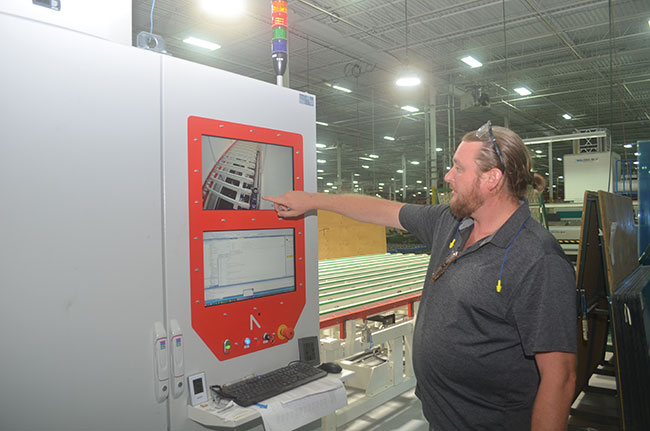 Andrew Dolphin with his laser etcher. The technology gives him the ability to etch bird-friendly patterns onto surface 1 on low-E glass. Can you feel the love?
Andrew Dolphin with his laser etcher. The technology gives him the ability to etch bird-friendly patterns onto surface 1 on low-E glass. Can you feel the love? AT A GLANCE – BVGlazing
Location: 131 Caldari, Concord, Ont.
Staff: 850
Shop: 160,000 square ft
Established: 1958
Focus: Glass fabrication, panel fabrication, aluminum window wall fabrication
Markets: North America
Website: bvglazing.com
If you check out BV Glazing Systems’ website, one of the first things that pops up on its home page is their slogan, “Enhancing Skylines.” As a company with more than 60 years’ experience delivering solutions to the window wall, curtainwall and railing industries (they were previously known as Allan Window Technologies), they’ve been enhancing skylines in some of the biggest cities in North America for decades. The company operates all over North America, including four cities with some of the most impressive skylines: Toronto, Vancouver, Seattle and New York.
While serving these major markets has its advantages, it also requires the company’s products to evolve quickly to stay in compliance with the latest building standards and municipal codes to remain a leader in building envelope fabrication. The company’s most recent investment is a new laser etching machine supplied by Orion Laser Tech out of Belgium. It was the first of its kind to be installed into the North American market. BVGlazing’s machine was installed at its fabrication plant in Concord, Ont., which runs three shifts, five days per week and also weekend overtime as required. The main application for this impressive piece of equipment: bird-friendly glass.
“The latest Toronto Green Standard version 4 adopted the CSA’s A460 bird-friendly requirements, and that means your bird-friendly markings have to go on the first surface of your glazing products, which is the exterior surface of a building,” explains Andrew Dolphin, general manager for BVGlazing Systems. “Due to thermal performance the low-E coatings have to remain on the second surface. The previous way we produced bird friendly was with ceramic frit paint, but you can’t do that on a piece of low-E glass. The laser will etch the first surface of the low-E glass before it goes on the furnace and then we make the sealed unit.”
While there are other options for first- surface bird-friendly markings, Dolphin says the laser etcher was the best option overall.
“You can also buy acid-etched sheets but for our business using the laser made more economic and practical sense. The laser allows us to use any glass substrate and low-E. And to size while holding a starting point so that the markings will line up, which is a feature most architects seem to like.”
The bird-friendly market is certainly experiencing significant growth, with Toronto, New York and Ottawa already bird-friendly glass markets and many others looking into it.
“Just about every major city in North America is looking to go to it,” Dolphin says. It was clear to him when Toronto was introducing bird-friendly standards that the regulations would pose a significant challenge to the industry. Speaking on the GlassTalk podcast in 2021, Dolphin said, “We’re talking about the first 16 meters of every building in Toronto. Who’s going to be able to supply that amount of glass to the market? You know, with energy codes you can’t move the low-E to surface three. And a lot of low-Es are second surface only. So you’re talking about taking away a lot of options for architects and developers. I’m just interested to know if the cities have done their research and understand what the repercussions are.” These were the considerations that spurred BVGlazing to start looking for better ways to produce bird-friendly glass.
Laser-focused
BVGlazing decided to team up with IGE technologies to procure the Orion Laser machine after visiting Orion’s plant in Belgium. “They specialize in precision equipment and lasers which seemed like a pretty good combination to make a laser etching machine.
“It’s a fairly simple machine with a lot of technology in it. The operation of it is very easy. We kept it very simple. We run two different bird-friendly patterns. We currently don’t do lines. We only do certain spacings that the codes require. That helped make it very easy to operate. I had three shifts running it within two weeks of installation,” Dolphin says.
While the Orion Laser Tech laser etcher comes at a significant up-front investment, the machine reduces overall operating costs when compared to using more traditional methods. It also makes the overall production process for bird-friendly glass more sustainable.
“There are no inputs. There’s no paint. There’s no screens. It’s literally just a little electricity. It doesn’t even use that much amperage – it’s around 60 amps,” Dolphin says.
The machine is easy to set-up and requires very little labour.
“If you have a crane on each end, you can just have one person load it onto the machine. Then it does the markings and the same person can offload it,” Dolphin says.
The laser etcher can produce upwards of 800 square feet of bird-friendly glass per shift. Dolphin says there is definitely a market for all that glass. “The market is big for this glass. Our own requirements are very large. And there’s a huge market coming up in the future. Dolphin says. “We’re a pretty forward-thinking company. I guess there’s a risk to anything, but we noticed the need in the market and went for it. Our senior leadership is very supportive.”
Investment in new technology
The glass department at BVGlazing’s Concord facility has been growing quickly, so the company is regularly reviewing its options for new fabrication equipment.
“About seven years ago, we made a huge investment into the glass department. We have a full operating glass facility here that provides glass to our curtainwall, window wall and railing departments, and also provides some glass to the market,” Dolphin says. Added around that time was a jumbo LiSec cutting table with an overhead gantry crane with 67 pick positions. It does XYZ cutting and shapes up to 132 inches, at four- to 19-millimeter thicknesses. “It’s our workhorse here now, Dolphin gushes. “It’s a great cutting table. We’ve got online edge deletion, which is really nice.” Dolphin added some racks fabricated in-house at BVGlazing’s commercial division. “They’ve got some really good steel workers down there.”
The big addition also included two LiSec IG lines with capacities of 96 by 180 inches with gas fill presses. Also an FC 500 furnace from Glaston bringing the company’s total up to two Glaston tempering furnaces. Dolphin says the automation is improving quality and efficiency. “We get really, really flat glass coming out with two Glaston furnaces now. The furnaces are equipped with Osprey and Ilook technology for peak-to-valley roller wave measurments. And we’ve also got thermal scanning coming out of the furnaces so operators can make sure they are getting even heating and make adjustments on the fly.
“The less times you’re touching things, your quality goes up,” Dolphin explains. “Glass handling is where you create a lot of your scratches and scuffs and especially when you’re dealing with low-Es. Low E coatings are really sensitive and easily damaged. So a lot of that has helped. Even just updating our carts to make sure we have the right padding and the correct wheels and fixing the floors and all those things. Because, you know, it’s a killer in glass fabricating. It’s one thing that people who don’t live it don’t understand. You’re remaking anywhere from two to 10 percent of every order. Trying to actually implement that into a production plan makes life very difficult. So the lower rework you can get and the more consistent you can get it, you can really put better plans in place.”
The Concord facility is considered a parts facility, producing aluminum panels as well as the framing for the company’s window wall systems.
“We do the cutting and fabricating and then across the street they do the glazing. We also have a warehouse here and we have another building that does our railings and stick curtainwall,” Dolphin says.
Future expansion plans for the Concord-based fabrication plant include increasing cutting and tempering capacity. “We are constantly reviewing our capacity and market conditions to decide if investment in more machinery is needed. Working for BVGlazing and our outstanding team has been amazing. I’m not sure I could of gained this kind of experience anywhere else”
A bright future
While higher interest rates and inflation have slowed new construction temporarily, Dolphin expects the slowdown to be short-lived. With record numbers of new immigrants entering Canada over the next few years, and the majority of those people headed to major cities like Toronto and Vancouver for employment opportunities, the demand for new high rise residential construction will only increase, spiking demand for all of BVGlazing’s products within the building envelope. •
Print this page
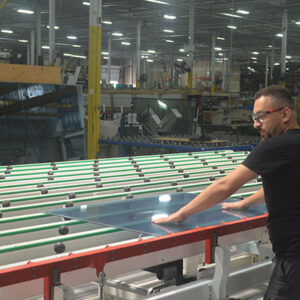
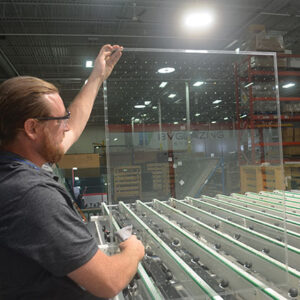
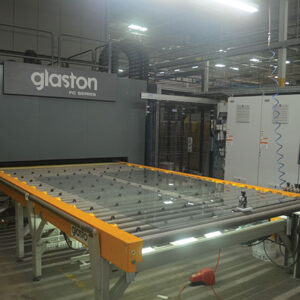
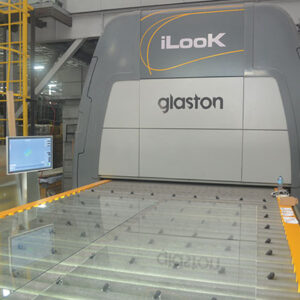
Leave a Reply